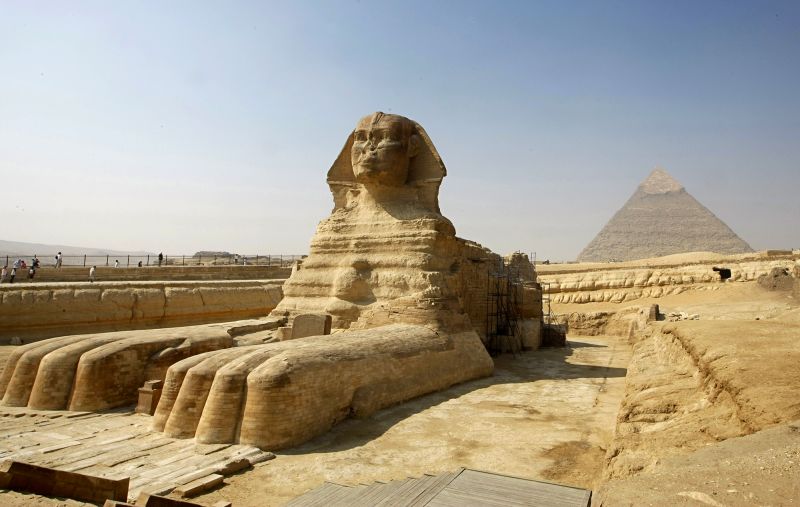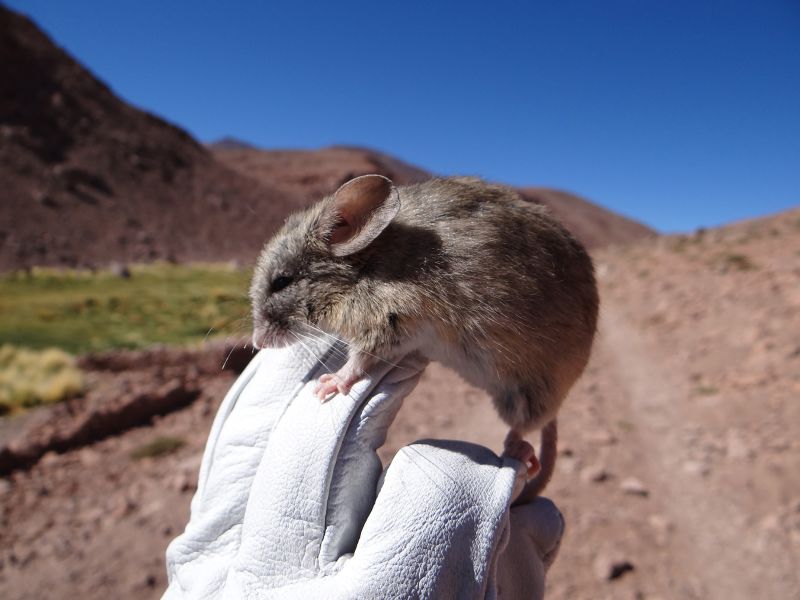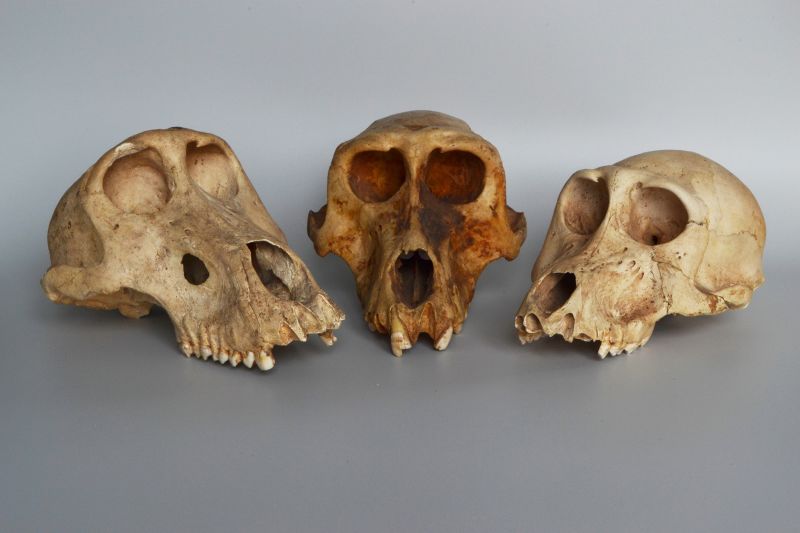
New Discoveries Uncover Secrets of Ancient Egyptian Baboon Mummies

New research uncovers fascinating details about the mysterious baboon mummies of ancient Egypt These sacred animals held great importance, yet recent analysis reveals their unfortunate living conditions, providing valuable insights into their role in ancient Egyptian society
Millions of animal mummies have been discovered in Egypt, including cats, dogs, ibises, and birds of prey, but mummified primates are rare and not well understood. However, recent analysis of mummified baboons is providing more information about their role in ancient Egypt, showing that although they were considered sacred animals, their quality of life was less than satisfactory.
Bones from mummified baboons discovered in the necropolis Gabbanat el-Qurud, in the so-called Valley of the Monkeys, to the southwest of Egypt's Valley of the Kings were analyzed by researchers. These bones, belonging to dozens of baboons of various ages, represent two species: the hamadryas baboon (Papio hamadryas) and the olive baboon (Papio anubis).
Interestingly, these species were not native to Egypt, but were imported from two distinct regions. The olive baboon was from the south, present-day Sudan, while the hamadryas baboon was from mountainous areas bordering the Red Sea, extending from Sudan to Eritrea, Somalia, and Ethiopia. Research lead and professor emeritus at the Royal Belgian Institute of Natural Sciences in Brussels, Wim Van Neer, noted that more detailed documentation of the exact provenances is still necessary.
The Great Sphinx of Giza is a colossal statue located on the Giza Plateau, near modern-day Cairo. It is a half-human, half-lion figure that stands on the west bank of the Nile River, with the Chephren (Khafre) Pyramid visible in the background in a photo taken on 23 October 2007. Believed to have been constructed by the ancient Egyptians in the 3rd millennium BC, between 2520 BC and 2494 BC, the Great Sphinx is one of the largest single-stone statues in the world. The mystery surrounding the identity of the model for the face, as well as the builders, has led to it being referred to as the "Riddle of the Sphinx," in reference to the Greek legend, although the phrase should not be confused with the original myth. (Photo credit: CRIS BOURONCLE/AFP via Getty Images)
Cris Bouroncle/AFP/Getty Images
Scientists offer evidence to support possible Great Sphinx origin story
The ancient Egyptians revered many animals, but the baboons, who were not native to Egypt, were particularly venerated, according to Van Neer. In a study published in the journal PLOS One, scientists reported that baboons likely had a role in ancient Egyptian rituals. However, caring for such large, non-native wild animals presented challenges. Researchers found that before their deaths, the baboons suffered from sunlight deprivation and developed bone ailments from poor nutrition. Examination of their skeletal remains revealed signs of rickets, with deformed arms, legs, and faces, undeveloped teeth, osteoarthritis, and other pathologies as a result of deprivation and metabolic disease.
The deformities found in the bones of baboons at this site were similar to those seen at two other ancient Egyptian sites - Saqqara and Tuna el-Gebel - dating back to the same period, according to the authors of the study.
Dr. Salima Ikram, a Distinguished University Professor of Egyptology from the American University of Cairo, who was not involved in the research, commented, "This well-executed study confirms earlier findings about the health of baboons in ancient Egypt. More importantly, it reveals that different types of baboons were brought to and raised in Egypt. It's intriguing to consider that the ancient Egyptians may have attempted to establish a breeding program for baboons, possibly for religious purposes as well as reverence." Ikram shared these thoughts with CNN in an email.
A collection of mixed monkey bones
Researchers have unearthed 463 mummified Old World monkey remains at the three primary Egyptian burial sites, as per the study. The baboon bones analyzed for the recent study were originally gathered in 1905 and 1906 by archaeologists from the Musée des Confluences (formerly the Muséum d'Histoire Naturelle de Lyon) in France.
In the tombs, there were pieces of dried skin with long tufts of hair still attached, indicating that the animals had been mummified. The French archaeologists collected 23 skulls, 24 mandibles, and over 200 isolated bones, which were then pieced together to form complete skeletons, regardless of whether all the bones belonged to the same baboon, according to the study.
Marcial Quiroga-Carmona
Mysterious mouse mummies found in Mars-like conditions on Andes mountain peaks
The bones of two different baboons were used to create two skeletons, with one skeleton representing three primates. Only one of the four properly assembled skeletons had the correct skull. The study authors identified 36 different baboons of varying ages, with more adults than juveniles and slightly more males than females.
The bones showed signs of metabolic issues during adolescent growth, including curved shafts, misshapen shaft heads, and arthritic joints. Two female baboons had experienced tooth decay, and some of the skulls had lesions. Additionally, two of the primates had shortened snouts, while two others had snouts that bent to the left.
The mummies were found to be much older than previously believed, with new evidence suggesting they were entombed between 803 and 520 BC. This conclusion was reached after bone collagen and fibers from a textile wrapped around an intact baboon mummy were examined, along with the use of radiocarbon dating to confirm the time frame. This method measures the amount of decay in a radioactive isotope of carbon to determine the age of organic material. Initial estimates placed the mummies as recent as the seventh century at the earliest, but the new evidence indicates they are centuries older than previously thought.
The baboons' skeletal remains revealed signs of deformities, undeveloped teeth, osteoarthritis and other pathologies resulting from deprivation and disease.
B. De Cupere
Sacred and suffering
The captive primates may have been in even worse conditions than their remains indicated, as bones do not always show evidence of parasites and other illnesses, the researchers found.
It is important to clarify that the scientists' findings do not imply intentional abuse of the baboons. Their caretakers likely did their best to look after the animals, "but it must have been very challenging," Van Neer explained.
"Baboons' natural climbing abilities likely led to their confinement in buildings or enclosures with high walls to prevent escape, resulting in a lack of sunlight and the development of metabolic disorders, notably rickets. There are no indications of physical mistreatment such as broken bones," he said.
"Regrettably, the Egyptians lacked knowledge on proper baboon care and feeding," Ikram commented. "Their attempts to show reverence and care inadvertently created conditions harmful to the animals' health and well-being - a classic case of good intentions paving the way to hell!"
Mindy Weisberger is a science writer and media producer whose work has appeared in Live Science, Scientific American and How It Works magazine.












